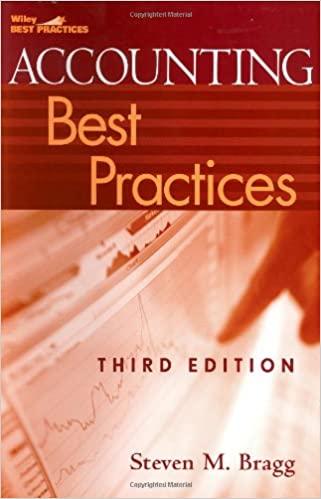Question
Polyfield Manufacturing prepares their annual budgets at the beginning of the year along with a mid-year update in June for any changes in estimates or
Polyfield Manufacturing prepares their annual budgets at the beginning of the year along with a mid-year update in June for any changes in estimates or business conditions. When the budget was prepared for the year, management made the following estimates for the month of July assuming sales of 65,000 units which sell for $10 each. Sales $650,000 Cost of Goods Sold $406,250 Gross Profit $243,750 Operating Expenses Selling expenses (variable) $58,500 Selling expenses (fixed) $35,000 Administrative expenses $22,000 Income before tax $128,250 Tax expense $26,933 Net income $101,318 You are working as Polyfields cost accountant, and management comes to you in June with some news about the projections for July. They recently received a large unexpected order from one of their biggest customers. Instead of 65,000 units, management is expecting to sell 85,000 units in July. They would like to see what the budget will look like assuming 85,000 units are sold rather than 65,000. Management assumes that the tax rate will remain unchanged. Part II Requirement: Use the information above to prepare a flexible budget for the month of July assuming 85,000 units will be sold. Assume that the company has existing capacity and will not incur any additional fixed costs. Part III. Manufacturing Variances In your chapter reading, youve learned about the primary manufacturing variances which include: Material price variance Material efficiency variance Labor rate variance Labor efficiency variance Variable overhead efficiency variance Variable overhead spending variance Fixed overhead spending variance Production-volume variance Youre working as an accounting analyst with a large manufacturing company, Bolton & Sons, Inc., when your manager comes to you with a request. The CFO is very concerned about the manufacturing variances from the previous month which are as follows: Material price variance $7,300 (unfavorable) Material efficiency variance $2,000 (favorable) Labor rate variance $6,200 (unfavorable) Labor efficiency variance $1,500 (unfavorable) Variable overhead efficiency variance $2,400 (unfavorable) Variable overhead spending variance $2,900 (favorable) Fixed overhead spending variance $3,600 (favorable) Production-volume variance $4,700 (unfavorable) The CFO doesnt understand why these numbers are all over the place. You have been placed in charge of the research, analysis, and explanation of these variances. Part III Requirement: Prepare an internal memo addressed to the CFO, Michelle Winters. In this memo, you will explain the following associated with each variance: Causes or drivers of the variance Other departments or employees that you consulted for information Any plans to adjust or combat these variances moving forward Your memo should be a minimum of 2 pages and should incorporate at least two scholarly resources outside of the textbook.
Step by Step Solution
There are 3 Steps involved in it
Step: 1

Get Instant Access to Expert-Tailored Solutions
See step-by-step solutions with expert insights and AI powered tools for academic success
Step: 2

Step: 3

Ace Your Homework with AI
Get the answers you need in no time with our AI-driven, step-by-step assistance
Get Started


